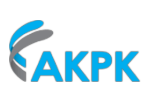INTERNATIONAL SCHOOLS
The cost of education means annual school fees of up to half-a-million ringgit!
On top of tuition fees, parents have to settle miscellaneous costs such as application fees, which could amount to over RM1,000, and school development fees, which can be as much as RM20,000. Apart from that, there are examination fees, technology fees and expenses for uniforms, bespoke international trips and extracurricular activities, among others.
And the cost is likely to continue to rise. According to Destination Education Malaysia,annual school fees for international schools may increase 5% to 10% every year. An International School Fee survey by ExpatFinder in 2017 found that tuition fees in the Asia-Pacific region saw the largest hike globally of 7% last year.
In a low to mid-tier international school, annual school fees can cost between RM3,000 and RM12,000 for the preschool level, and between RM30,000 and RM50,000 for the primary and secondary school levels. Schools fees at top tier international schools can go up to RM50,000 per year at the kindergarten level to RM100,000 per year for high school. If a childstudies in a top-tier international school from kindergarten all the way to grade 12, th cost could add up to more than RM1 million, according to some calculations.
International schools have become a popular choice for Malaysians since the quota on the enrolment of locals was abolished in 2012. Education DestinationMalaysia says the number of international schools rose from 108 in 2012 to 170 in 2017.
PRIVATE SCHOOLS
Private schools are a more affordable option than international schools, with tuition fees ranging from RM5,000 to over RM20,000 a year for the primary and secondary levels, according to the School Advisor portal. At preschool level, a top-tier private kindergarten using the Montessori method could cost close to RM30,000 per year, says the Private International School Fair website.
HOME SCHOOLING AND OTHER OPTIONS
Many parents have chosen to send their children to private learning or home-schooling centres. Some of these follow international curricula, while the students may also choose to take national examinations as independent candidates. The cost of sending a child to such centres can range from RM400 to RM3,000 per month. The government has also warned parents to be cautious of centres that operate without a licence.
Meanwhile, other alternatives, such as private Chinese independent schools, could cost from RM3,500 to RM6,000 per year, with boarders having to fork out more, according to School Advisor.
Providing a good and well-rounded education for your children comes with a hefty price tag nowadays as the cost of living continues to trend upwards
Although parents now have more choices, the cost of a high-quality education can only increase, particularly for competitive schools in urbanised areas.
Parents need to plan wisely for the future and ensure they have enough resources to give their children the best education.
























